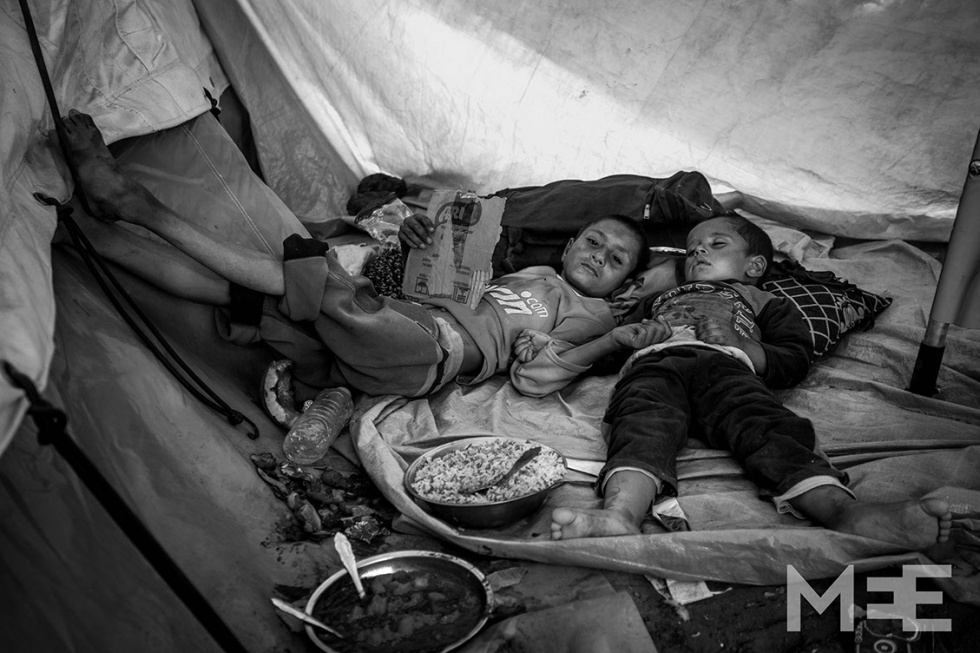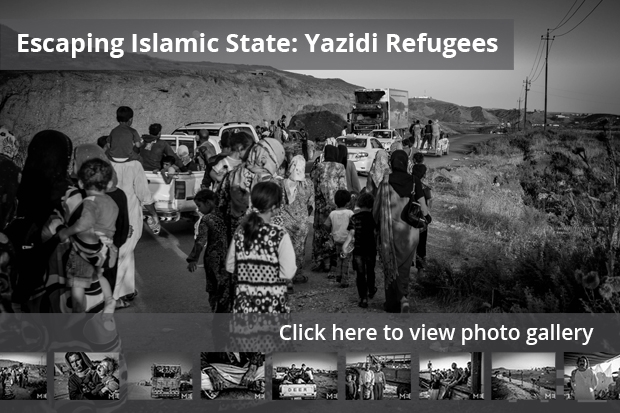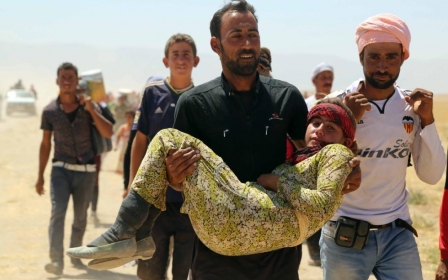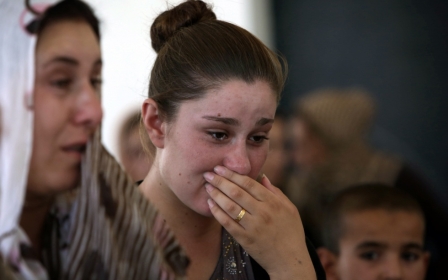In pictures: Yazidi refugees flee IS fighters

AL-MALIKIYYA, Syria - In August 2014, fighters from the Islamic State routed Yazidi minority communities living in the Mount Sinjar region of Iraq, and threatened to execute them en mass unless they converted to Islam.
Those who could escaped north to the autonomous Iraqi Kurdistan region, but many others found the route closed and had no other option but to scale the nearby mountains.
Encircled, besieged, and isolated for a number of days, some 50,000 Yazidis began to starve or die of dehydration in the harsh sunlight of northwest Iraq.
They - as a people - lost hope of rescue, but a growing sense of international shock and outrage soon began to grow.
Then suddenly, there was a sea change. American airstrikes and an emboldened counter-offensive from Kurdish ‘Peshmergah’ fighters offered a life-line for the stranded Yazidis.
Guided across the Iraq-Syria border and then northwards, the Yazidis escaped by traversing a 100km corridor to arrive exhausted, although the conditions that awaited them in Syria and northern Iraq were not much better than what they had experienced on the mountain.
It was a gruelling journey, with no planned destination, simply escape. Most walked through the unknown of the night and the searing heat of the day.
Some families were able to hitch lifts and some locals with vehicles soon started ferrying the half-collapsed. Eventually Kurdish authorities diverted lorries and farm vehicles to transport families north.
A few families paused on the outskirts of a dusty setting, al-Malikiyya, in the north easternmost district of Syria, awaiting the possibility to cross back into safer areas of north Iraq. However, these ‘few’ soon turned to ‘many’, and then to ‘too many’.
People, mostly children, drunk whatever water they could find, and slept where they could. In the beginning, this was often contaminated river water and half-constructed buildings. But the numbers swelled.
Relief organisations, both local and international, have begun to supply shelter, food, health and sanitation supplies for the exhausted and terrified Yazidis.
Middle East Eye propose une couverture et une analyse indépendantes et incomparables du Moyen-Orient, de l’Afrique du Nord et d’autres régions du monde. Pour en savoir plus sur la reprise de ce contenu et les frais qui s’appliquent, veuillez remplir ce formulaire [en anglais]. Pour en savoir plus sur MEE, cliquez ici [en anglais].





